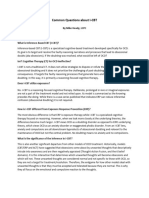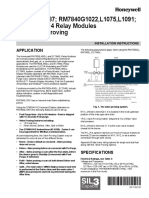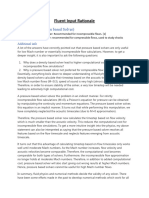0% found this document useful (0 votes)
5 views21 pagesChapter 9
Chapter 9 explains virtual memory, a technique that allows systems to use more logical memory than physical memory by loading only necessary program parts into RAM. It discusses demand paging as the most common implementation method, where pages are loaded into memory only when needed, and outlines the process of page replacement and handling page faults. The chapter also highlights the importance of managing memory efficiently to prevent thrashing, which occurs when excessive page swapping degrades system performance.
Uploaded by
Hassan AwashCopyright
© © All Rights Reserved
We take content rights seriously. If you suspect this is your content, claim it here.
Available Formats
Download as PDF, TXT or read online on Scribd
0% found this document useful (0 votes)
5 views21 pagesChapter 9
Chapter 9 explains virtual memory, a technique that allows systems to use more logical memory than physical memory by loading only necessary program parts into RAM. It discusses demand paging as the most common implementation method, where pages are loaded into memory only when needed, and outlines the process of page replacement and handling page faults. The chapter also highlights the importance of managing memory efficiently to prevent thrashing, which occurs when excessive page swapping degrades system performance.
Uploaded by
Hassan AwashCopyright
© © All Rights Reserved
We take content rights seriously. If you suspect this is your content, claim it here.
Available Formats
Download as PDF, TXT or read online on Scribd
/ 21























































































